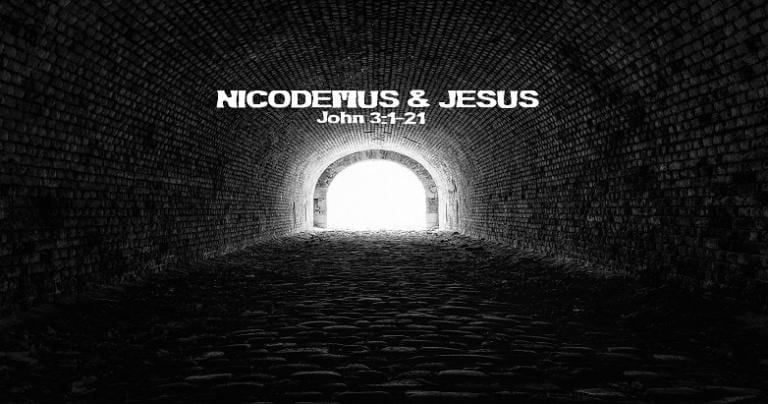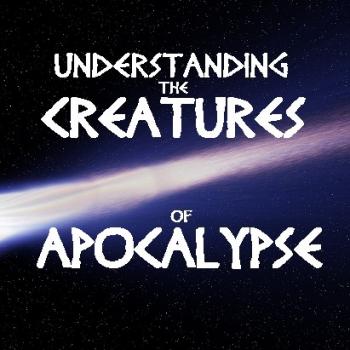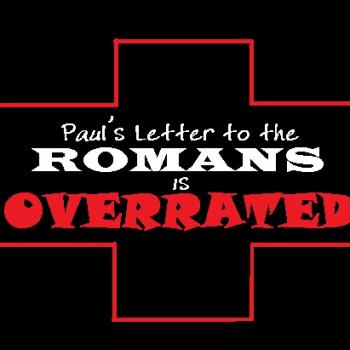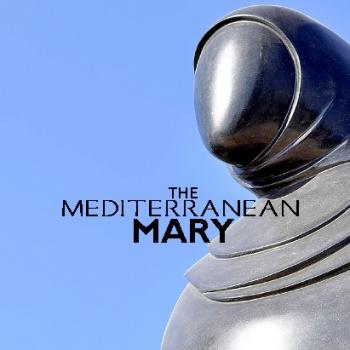Nicodemus and Jesus converse in Gospel readings all this second Easter week about spiritual matters spuriously familiar to 21st century Christians.
Nicodemus is a fondly remembered character that in all the New Testament only appears in the Gospel called “John.” This week, Christians West and East get very Johannine. In the Latin Rite, Monday through Thursday, the daily Gospels all come from John chapter three and Jesus’ nighttime dialogue with Nicodemus.
The Line Between Jesus & Nicodemus
The Johannine Jesus’ Conversation with Nicodemus sets up a big theme in the Fourth Gospel. In “the world” according to “John,” you have believers who have new life (the Johannine Jesus group) and unbelievers who don’t. The dividing line is drawn severely in John 3:1-21.
A diptych a piece of art with two scenes placed side by side in parallel fashion. The whole of John chapter three is a diptych inviting comparison and contrast. In Scene One (John 3:1-21), Nicodemus and Jesus converse at night about how to become a child of God made possible by God sending down the Son of Man from the sky vault. In Scene Two (John 3:22-36), John the prophet witnesses to the prominence of the Sent One from God, the One who brings new like exclusively for those who believe.
The comparison between Nicodemus and John the Baptist is that between darkness against light. Or that between one born of human flesh, blood, and semen and one born of water and spirit. Or that between one blind from below and one enlightened from above. It is the contrast between death and life, lies and truth, and ultimately between the dominant society of the Judaeans (“the world”) and the Johannine antisociety (tekna Theou, or “the Children of God,” see John 1:12-13).
Nicodemus & Darkness
Although you would never know it from Jesus movies and many sermons and homilies, Nicodemus is a figure synonymous with darkness. That is, until he becomes a secret disciple; but even then things are shady! Unlike the Samaritan Woman who converses with Jesus in broad daylight (John 4:6-7), Nicodemus approaches Jesus in the dead of night. Wow, that took a lot of guts, huh?
Nicodemus coming to Jesus at night (watch the emphasis in John 19:39!) is “John” screaming these contrasts at his audience. How great the difference is between the darkness of Nicodemus, who approaches and leaves Jesus in the dark without understanding, and the light Jesus provides—
John 3:19-21
And this is the verdict, that the light came into the world [the dominant society Israel], but people preferred darkness to light, because their works were evil. For everyone who does wicked things hates the light and does not come toward the light, so that his works might not be exposed. But whoever lives the truth comes to the light, so that his works may be clearly seen as done in God.
Sentimental Movies
In this sobering analysis, despite Sir Lawrence Oliver’s sentimental performance in Franco Zeffirelli’s crypto-Docetic “Jesus of Nazareth” (which portrayed the conversation of John 3 happening IN BROAD DAYLIGHT!), Nicodemus looks rather poorly.
https://youtu.be/oKC7VKOd44I
When reading spuriously familiar Bible stories, a good tip is to shake all the nonsensical Jesusy-movie crap out of our heads. Nicodemus, who mentions “signs” represents the Judeans of John 2:23-24 (see also 8:30-59), people to whom Jesus refused to entrust himself. Sorry Zeffirelli. I will forever love your miniseries, but it’s way off.
The Improbable Story of Nicodemus Visiting Jesus
Nicodemus calls Jesus “Rabbi.” This would not be a clerical title, like that applied to Jewish rabbis, for over a century following the composition of the Fourth Gospel. In Jesus’ day “rabbi” was an honorific one that meant “great one.” Disciples would respectfully call their teacher “rabbi” (see John 1:38; 1:49; 4:31; 9:2; 11:8).
Can you imagine a member of the Jerusalem elite addressing a Galilean peasant villager and day laborer as “great one/teacher”? That would be a thousand times more improbable than 21st Americans equally praising grocery baggers, truck drivers, and food delivery workers like they would highly respected medical professionals as heroes in a pandemic. So this whole story is culturally inappropriate and jarring. The socially-correct response about Jesus the nothing-person came from Nathanael in John 1:46.
I mean think about it. If someone from the Sanhedrin actually approached Jesus to converse with and learn from him, if this historically happened, don’t you think it would be all over the Gospels? But it’s only in “John” and nowhere else. Did it happen, but the Synoptic Evangelists not know about it? If it historically happened, it is preposterous that only “John” would remember it.
Getting the Mediterranean Shock Value
The story of Nicodemus and Jesus is shocking and highly improbable as a biographical report of an actual historical event in the life of Jesus. It is likely yet another Johannine theological fiction meant to bring out the truth of Jesus. Like other Johannine characters, Nicodemus serves as a foil in the Gospel, opening a window for Jesus to pour out an explanatory monologue.
In a couple posts this week we will dive into this fascinating and illuminating chapter in the Fourth Gospel.
















